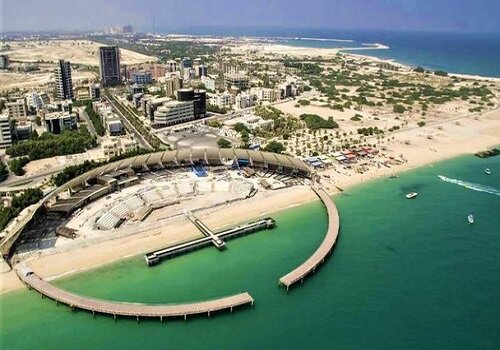70 infrastructure, development projects underway in Kish Free Zone

TEHRAN- As announced by the managing director of Kish Free Zone Organization, 70 infrastructure and development projects are underway in this free trade zone.
Saying that most of these projects are carried out in the infrastructure sector to improve the condition for the investors in the island, Jafar Ahangaran put the worth of investment making for these projects at 33 trillion rials (about $785.7 million).
The implementation operation of most of the projects has been already completed, the official said, adding implementation of the projects create direct jobs for 8,500 persons, which will reach 6,890 persons when the projects are completed.
He further stated that in recent years, the organization has put various development programs in the field of airport, port and urban development on its agenda to provide the ground for improving the quality of services to residents, tourists and investors.
Kish Island, with an area of ??92 square kilometers and a population of 42,000, is located 18 kilometers from the mainland in the Persian Gulf.
Over the past two decades, free and special economic zones have played a significant role in Iran’s economy, and the Iranian government has been seriously pursuing a program for the development of the existing zones and establishing new ones.
According to Morteza Bank, the former secretary of Iranian Free Zones High Council, over 40 percent of Iran’s exports are done through the country’s free trade zones and special economic zones and $169 billion worth of commodities have been exported from these areas in the past seven years.
Development of the mentioned zones became more significant since the re-imposition of U.S. sanctions on the Iranian economy in November 2018, as the Islamic Republic started reducing dependence on oil incomes while elevating its domestic production and non-oil exports.
Although the sanctions have disrupted Iran’s economic activities, they could not impede the development of Iranian free trade and special economic zones; in fact, the development of these zones has been even accelerated.
The measures taken by the government for the development of the mentioned zones have been paying off significantly so that despite the negative impacts of the U.S. sanctions and the coronavirus pandemic, the trade balance of the mentioned zones has stayed positive in recent years.
In late April, the Secretary of Iranian Free Zones High Council Hamidreza Mo’meni announced that the trade balance of the country’s free and special economic zones has been positive in the past two years despite the negative balance of the country's foreign trade.
Today, the free zones are in a good condition and positive development measures have been taken which have led to significant growth in these zones, he said.
According to the official, the country’s free and economic zones should become more productive in order to be able to fund their own development projects in the future.
In early May, Mo’meni announced the approval for the establishment of 13 new special economic zones and seven free trade zones across the country.
“After discussion on all proposed areas and based on the experiences of the existing zones, the establishment of seven free zones and 13 special economic zones was approved,” the official said.
The mentioned free zones will be established in Kordestan, Ilam, Sistan-Baluchestan, Bushehr, Kermanshah, Ardebil, and Golestan, while the special zones are going to be based in Fars, Yazd, Zanjan, Lorestan, West Azarbaijan, Qazvin and etc.
The establishment of free trade zones in Iran dates back to the Iranian calendar year 1368 (March 1989- March 1990) following the fall in the country’s oil income in the preceding year which prompted the government to promote non-oil exports.
The first two free trade zones of Iran were established in the south of the country. The first one was Kish Free Trade Zone established in 1368 on Kish Island in the Persian Gulf and the second one was Qeshm Free Trade Zone established the year after on Qeshm Island in the Strait of Hormuz.
Some five other free trade zones have been also established in the country since then, including Chabahar in southeastern Sistan-Baluchestan Province, Arvand in southwestern Khuzestan Province, Anzali in northern Gilan Province, Aras in East-Azarbaijan Province, and Maku in West-Azarbaijan Province, both in the northwest of the country.
MA/MA
